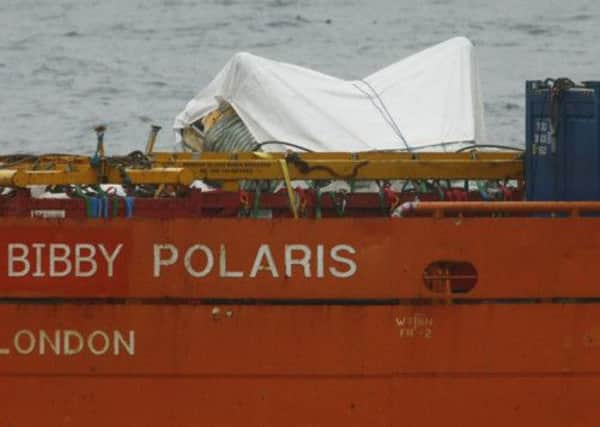Super Puma crash may have been due to pilot error


The speed of the CHC-operated Super Puma AS332L2 helicopter reduced significantly on its approach to Shetland’s Sumburgh airport “unobserved by the crew”, a special bulletin on the crash by the government’s Air Accident Investigation Branch (AAIB) revealed.
The helicopter was flying at 80 knots while just over two nautical miles from Shetland’s main airport, but the speed was cut to only 35 knots when only a mile away.
Advertisement
Hide AdAdvertisement
Hide AdThe two-man crew received two automated “check height” warnings during their approach followed by an automated “100ft” call two seconds before the helicopter, with two pilots and 16 passengers on board, plunged into the sea.
The report states: “At some point the commander saw the sea, but he was unable to arrest the helicopter’s descent and it struck the surface shortly thereafter.”
The AAIB bulletin also highlights concerns about the rescue response to the 23 August crash, which claimed the lives of Sarah Darnley, 45, from Elgin, Gary McCrossan, 59, from Inverness, Duncan Munro, 46, from Bishop Auckland, and George Allison, 57, from Winchester.
The nearest slipway to the Sumburgh runway required the launch vehicle for the airport’s fast rescue craft to be connected to a safety winch, adding to a six-minute delay. But a survey carried out in 2010 also showed the slipway could only be used in
11 per cent of tidal conditions.
The nearest alternative launch site, south of the runway, was on a soft sandy beach.
The report states: “The FRC could not be launched from the slipway near the runway threshold due to the unfavourable tidal conditions that prevailed. An attempt was made to use the alternative launch site, but the FRC became bogged down in the soft sand and had to be recovered.”
The rescue craft was eventually launched near another runway and arrived at the accident scene 58 minutes after the Super Puma had crashed. Two of the three rescue crew members were also injured due to the “difficult sea conditions”.
According to the bulletin, the Super Puma which crashed on 23 August, had been on autopilot when it began its approach into Sumburgh airport.
Advertisement
Hide AdAdvertisement
Hide AdThe report states: “At approximately 2.3 nautical miles, the commander noted that the airspeed was 80 knots and increased the collective pitch, intending to maintain speed. However, the helicopter’s airspeed reduced below 80 knots and continued to reduce, unobserved by the crew.”
After the alarms sounded, the co-pilot activated the helicopter’s flotation system, the investigators say.
The report goes on: “The ongoing AAIB investigation will focus on operational aspects of the flight: specifically on the effectiveness of pilot monitoring of instruments during the approach, operational procedures and the training of flight crews.”
Duncan Trapp, vice-president of safety and quality at CHC Helicopter, agreed that “human factors” were now a focus of the AAIB investigation.
He said: “The report clarifies there is no indication at all of any technical issue. It does indicate that the airspeed did reduce. It indicates that all of the systems in the aircraft appeared to be working. So human factors is definitely an area which the AAIB in their internal investigation is looking into.”
A spokesman for Highlands and Islands Airports said: “We will consider the report in detail and engage with the AAIB, the Civil Aviation Authority and others on how best to address these issues.”